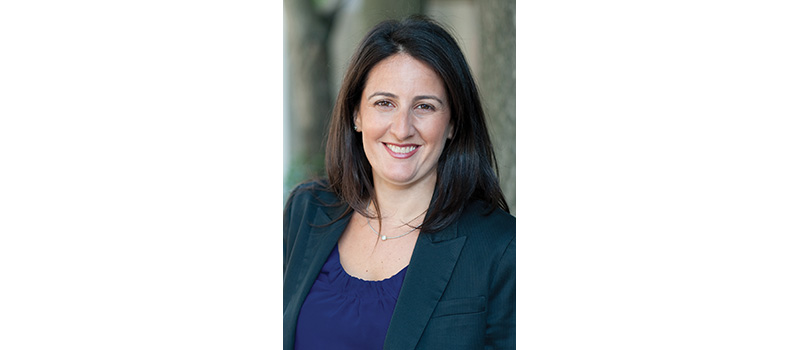by Rabbi Sari Laufer
Every aspect of the shooting in Poway is tragic and horrifying, but since it happened, I cannot stop thinking about the distinct mix of emotions and experiences that the last day of Passover offers. It is a day of Yizkor, and a day of Hallel; a day of memory and a day of celebration. It is a complicated, liminal day—joy and pain deeply intertwined. In fact, these days and weeks ahead—they are the liminal time. We move from Yom HaShoah and Yom HaZikaron, these days of deepest pain, into Yom HaAtzmaut, celebrating a modern miracle. We move through these days of the Omer, these days between Passover and Shavuot. Theologically and spiritual meant to be anxious, the historical overlays of the holiday provoke additional memories of pain and fear on the way to the gift of Torah. And through them all, we carry this year’s pain—from Pittsburgh to Poway, in particular, from New Zealand to Sri Lanka on the periphery.
Acharei Mot, this week’s Torah portion, is usually part of a double-portion with the portion we will read next week, Kedoshim. Acharei Mot, while focused on sexual ethics and forbidden relationships, begins after a pause; several weeks ago, we read of the death of Aaron’s sons—a shocking act of Divine violence or vengeance. This week, our portion opens with “what comes next.”
While not matched on the American calendar, it was exactly 6 years ago on the Jewish calendar. Just days before we read the portion Acharei Mot in 2013, 2 bombs exploded at the finish line of the Boston Marathon, killing 3, wounding hundreds, and shocking a nation. 6 years ago, as the Boston Marathon bombing story shifted into Shabbat Acharei Mot/Kedoshim, I found myself seeking a connection. I was not alone. Over the centuries, our sages have tried to make a textual—or spiritual connection—between these two portions, that are tied together most years by the liturgical calendar. 6 years ago, I asked my community:
What if, some have suggested, we look only at the first words of each portion: Acharei mot…kedoshim tihiyhu. Taken at their most literal: After death, you shall be holy. What a lesson, what an imperative, to hold with us this week, this year. After death—after witnessing terror and tragedy, loss and grief, you shall be holy; you shall be your highest self, your best impulses. Rabbi David Ingber suggests we read it thusly: after death, after witnessing life cut short, unexpectedly, without warning or preparation, ‘holy ones’, rededicate yourselves to holiness, to making the world a more meaningful, more loving, more compassionate place to be.
This year, the two are separated—we read them in successive weeks, and perhaps there is a lesson in that. We are still in the shock, in the grief, in the anger, in the pain—we are acharei mot. But, our tradition does not want us to—does not let us—stay there. Kedoshim t’hiyu—it is an imperative, a command. Be holy.
In a well-known Talmudic teaching, the rabbis ask what it means to, in the words of Deuteronomy, walk in God’s ways. How can we, they ask, walk in the ways of a Being we cannot see, or feel, or touch. Their answer: “Just as God clothes the naked, so should you; just as God visited the sick, so should you; just as God comforted the mourners, so should you; and just as God buried the dead, so should you.” Acharei mot, kedoshim tihiyu….
Writing about the first responders of the Boston Marathon, Rabbi Shai Held wrote the following:
Notice something about the Talmud’s list. The naked are vulnerable, but their situation is reversible; the sick are vulnerable, but at least sometimes they can heal. Mourners have sustained an immense loss; nothing can bring back their loved ones. And the dead are… dead, and never coming back. Their situation is the very paradigm of irreversibility. Each situation the Talmud invokes is more irreversible than the one before, and hence, I think, also more frightening. Yes, the Talmud appears to be saying, these people’s circumstances are scary. Stay with them instead of fleeing.
Faced with a situation that makes us stare the depth and extent of out vulnerability in the face, most of us want to flee. Here, then, is Judaism’s message: You want to serve God? Run towards the very people and places you most want to run away from. You want to be religious? Learn to be present for other people when they are in pain.
I am sure that many of you read the words of Rabbi Yisroel Goldstein, the rabbi of the Chabad of Poway, calling on himself—and the rest of us—to be more brazen, more committed to and proud of our Jewish identities and Jewish lives; show up for synagogue this Shabbat, he said, usher in Shabbat with your families and your communities, and bring more kindness into the world. Let’s heed the call. Because acharei mot—after death, maybe because of death, perhaps the most we can do—the best we can do—is kedoshim t’hiyu, be holy.
Shabbat Shalom.

